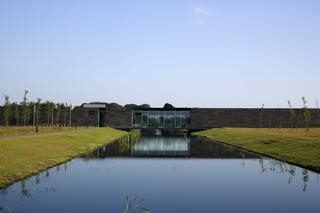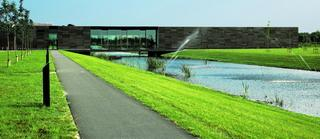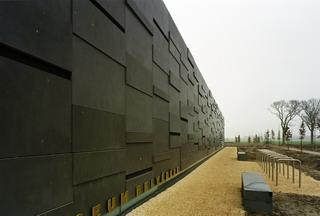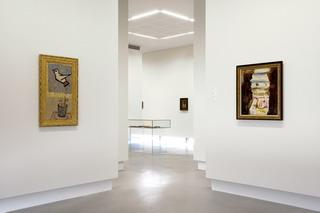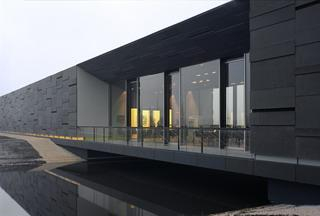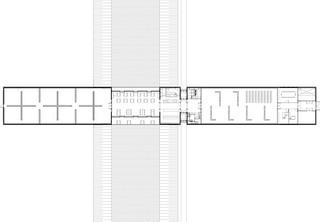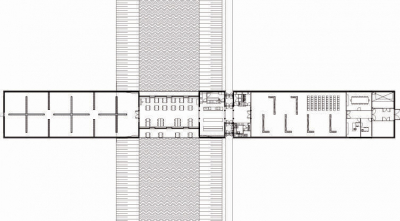Museum Belvédère
The Belvédère Museum is situated in Oranjewoud, an area of natural beauty just outside the town of Heerenveen in the Dutch province of Friesland.
As one approaches the museum from the north, coming from the little village of De Knipe, there is initially very little to see: a simple long, low rectangular object in the distance. The dark-coloured facades are almost invisible against the trunks of the trees. Only the two lighter patches represented by the entrance to the museum and the restaurant provide a little contrast. When the acacias planted in the garden in front of the museum have filled out in a few years, the architecture will be even more unobtrusive.
The architecture maintains a natural presence in the landscape, with a strong form accentuated by the powerful, largely closed surfaces of the facades, faced with large basalt sheets of varying thickness. Moreover, the location of the building which is more than a hundred metres in length can hardly be said to be modest: the museum boldly straddles the Grand Canal created in the 18th century by the architect and landscape gardener Daniel Marot as an appendage to the manor house of Oranjewoud.
Within the walls of the museum, the architecture also takes second place to the art on show in the various galleries. The permanent exhibition is displayed in one wing, which is divided into a series of open rooms in a simple, regular manner. A similar peaceful atmosphere reigns in the wing for the special exhibitions, where separate rooms can be created with the aid of movable partitions.
The restaurant with its transparent walls, placed between the two above-mentioned wings, offers a panoramic view of the woodland area of Oranjewoud to the south and the water and fields of the fenland to the north. This view is so impressive that, sitting in the restaurant, one has the feeling of being out of doors rather than in a building. The landscape also makes itself constantly felt in other parts of the museum: the slit windows at plinth level in the exhibition rooms not only provide a certain amount of daylight but also offer glimpses of the land and water surrounding the building.
This does not mean, however, that the architect Eerde Schippers from Inbos offices in nearby Drachten has designed a museum that is so unassuming as to be almost invisible. The paradoxical quality of the architecture of the Belvédère Museum is that it combines a very definite presence with an air of modesty. Its form is minimalist, yet without the shock effect of Minimalism with a capital M. While by no means a small building, it does not impose itself on the boundless landscape that is its setting. In fact, the structure stresses the intimate bonds that architecture can create between landscape and art.

